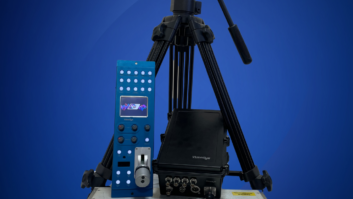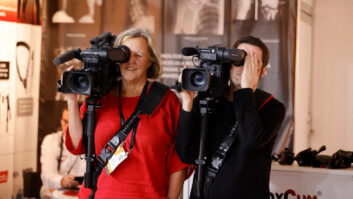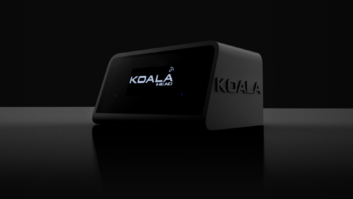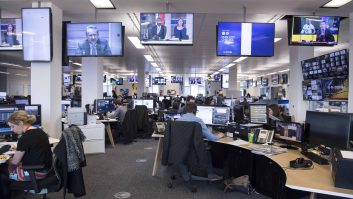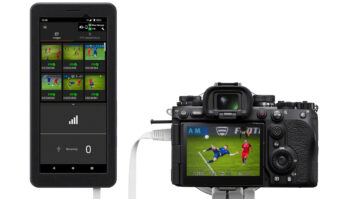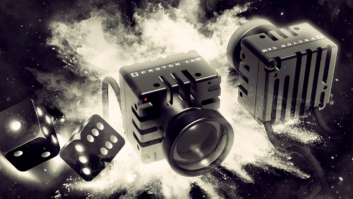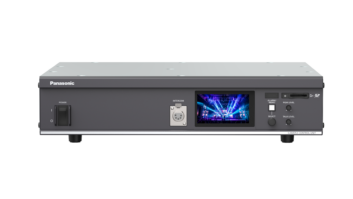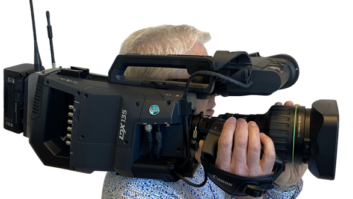
The Camerobot Robokam is a robotic camera support system that is used both in the news sector and in tabletop shooting (TTS). As these appear to be completely different fields of application, how can they both be served with the same system?
The main difference between these two shooting scenarios is the ‘macroscopic’ and ‘microscopic’ employment of the camera. Most newscasts require a large presentation area, while in the case of TTS, the set is restricted to a small area within which lamps, camera-carrying kinematics, actors and sensors, as well as the subject, are squeezed together. In TTS, impromptu, sweeping camera moves are virtually impossible.
Macroscopic and microscopic
In the news studio, the camera is programmed on the basis of its three axes. A position can be specified for each axis at any point. As long as the camera system is operated in a macroscopic mode, this form of programming is absolutely sufficient. But on a small scale, a programming model must be adapted. In that “microscopic” case, the axis-based control is not precise enough, and the subject in the image soon starts ‘wandering’. In such cases, a target-based programming model may be more appropriate.
In these TTS scenarios, the camera’s orientation is not defined through its axes pan, tilt and roll, as it would be in the newsroom, but on the basis of a target position aligned towards the camera head. This form of programming requires a deeper technical understanding than using the simpler axis-based control. TTS shooting also often uses movements with a constant speed between two positions. Since the camera-carrying system cannot shoot a fixed speed at standstill, moves need a preroll and a postroll. This means that the system extends the length of its movement so as to hit the starting position with the correct speed, which will remain constant until the end position is reached. The system will then start braking and eventually stop.
Repetitive vs. creative
On the opposite side of the scale, newscasts can be standardised because certain sequences are repeated over and over again. Apart from the opening and closing movement there are moves that link different settings with each other. The individual moves are programmed once and then typically used for several weeks or months. Such kind of repetitive use is unusual in the field of TTS, which tend to require more innovation and creativity. In TTS, an individual move could be generated for each subject to ensure it is captured in the best possible way, and incorporating data points for all three axes, the camera could be placed in any position at any time, a feature not typical of typical of newscasts.
Focus on speed
Another difference between newsroom shooting and TSS is the use of zoom and focus. Unlike in the news field, the TTS sector mostly uses prime lenses, not equipped a zoom. This difference has an impact on the camera movement, since the subject can only change size in the frame with a change in camera position. Since the lenses employed have only a low depth of field, the programming of focus axis can be particuarly laborious.. The news sector uses lenses with a much higher depth of field, so that adjusting the focus requires less effort.
Moves in newscasts are slower because the viewer must be able to follow the moves. TTS, on the other hand, makes it possible to perform very slow or very fast camera moves. It is one of TTS’s features that the footage is not directly imported. Instead, several shots are stored and edited first, so as to be able to pick the best. Extremely slow moves can generate, with a slowed-down frame rate, similar images to extremely fast moves with an increased frame rate.
A system for both areas?
Both sectors complement each other. Given the right basic functions, the same camera systems can be employed in both sectors. The Camerobot Robokam is an industrial robot that distinguishes itself by precision and high speed, making it suitable for use in both areas.
By Sebastian Frühling and Stephan Grune
